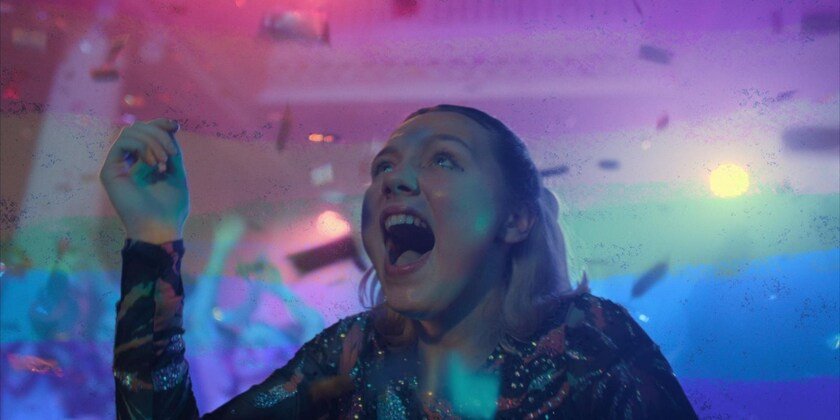Heartstopper Season 1 Story:-
My journey with Heartstopper began when I received an ARC of Volume Two in a subscription box. Intrigued, I quickly delved into Volume One and Two, devouring them with lightning speed. Amidst the tumult of 2021, I found solace in this heartwarming teenage romance that prioritizes character development above all else. As I eagerly awaited the release of Volumes Three and Four, the news that Netflix had picked up the series filled me with excitement. With the series creator and writer Alice Oseman involved, I knew the adaptation would meet my expectations.
Movie Ratings
| Release Date | 22 April 2022 |
| Language | English |
| Genre | Drama, Romance |
| Episodes | 8 |
| Creator | Alice Oseman |
| Cast | Kit Connor, Joe Locke, William Gao, Yasmin Finney, Corinna Brown, Kizzy Edgell, Tobie Donovan, Rhea Norwood, Jenny Walser, Sebastian Croft, Cormac Hyde-Corrin, Fisayo Akinade, Chetna Pandya, Stephen Fry, Olivia Colman |
| Director | Euros Lyn |
| Writer | Alice Oseman |
| Cinematography | Diana Olifirova |
| Music | Adiescar Chase |
| Producer | Patrick Walters, Alice Oseman, Euros Lyn, Iain Canning, Hakan Kousetta, Jamie Laurenson, Emile Sherman |
| Production | See-Saw Films |
| Certificate | 16+ |
Heartstopper, spanning eight episodes of approximately 25 minutes each, adeptly captures the essence of the graphic novel series while delving into the lives of its supporting characters. The show primarily covers the events of Volume One and Two, which center on Nick and Charlie’s budding romance, before expanding to explore the experiences of their friends in Volume Three. The show’s development has been a multi-year journey, with Oseman’s involvement ensuring fidelity to the source material.
One of the show’s strengths lies in its diverse representation, both in terms of LGBTQIA+ and BIPOC characters. The primary cast includes individuals who identify as gay, bi, trans, and ace, providing much-needed visibility for marginalized communities. Additionally, BIPOC characters are well-represented among both students and teachers, reflecting the rich diversity of the real world. While the show excels in many aspects of representation, the absence of plus-size characters is a missed opportunity to further diversify the cast.
Book readers will notice a deviation from the source material regarding Charlie’s friends, with the introduction of a new character named Isaac. Oseman has explained this change, citing concerns about integrating Aled Last from her novel Radio Silence without doing his character justice. While Aled’s absence may disappoint some fans, Isaac’s love for books adds depth to his character and serves as a subtle nod to Aled’s literary background.
The show pays homage to the graphic novels through various references, including the use of a turquoise and orange color palette reminiscent of the book covers. Comic-style overlays and illustrations in Oseman’s distinctive style further bridge the gap between the source material and the adaptation. Additionally, Charlie and Nick’s catchphrase, “Why are we like this?” recurs throughout the series, serving as a charming reminder of their bond.
Overall, Heartstopper succeeds in translating the charm and emotional depth of the graphic novels to the screen. While some deviations from the source material may surprise fans, the show remains faithful to the spirit of Oseman’s work. With its heartfelt portrayal of teenage romance and themes of identity and acceptance, Heartstopper is a delightful addition to the world of LGBTQIA+ representation in media.
For American viewers, understanding most aspects of this British show is straightforward. However, there may be some unfamiliar slang terms, such as “chirps” or “chirpsing,” which means to flirt or chat up someone. Additionally, British schools have a different grading system compared to the US. For instance, grades are numbered from 1 to 13 instead of using the American style of kindergarten plus grades 1 to 12. In the show, Charlie is in Year 10, equivalent to a Freshman in the US, while Nick is in Year 11, akin to a Sophomore. British schools typically use the GCSEs (General Certificate of Secondary Education) as academic qualifications, followed by A-levels (Advanced Levels).
Family dynamics play a significant role in the show. Unlike the conflicts present in the book, the show opts to focus on positive familial interactions. Nick’s brother, who is homophobic in the book, is portrayed differently in the show to avoid overwhelming viewers with conflicts. Instead, Nick’s mom’s acceptance of his sexuality is highlighted, leaving room to explore his brother and absent father’s dynamics in future seasons. Casting Olivia Coleman as Nick’s mom adds depth to the character, particularly in the scene where Nick comes out to her. Similarly, Charlie’s family dynamics are simplified in the show, with only his sister Tori and father providing support. Unlike the book, where Charlie’s mother struggles to understand his mental health issues, the show omits this conflict to focus on other plotlines. Charlie’s eating disorder is subtly hinted at in the show, leaving room for future exploration in potential seasons.
Overall, the show excels in various aspects, including acting, music selection, visuals, and adaptation of the source material. It presents a refreshing take on the high school experience, devoid of cringe-inducing moments. While there is no news yet about the show’s renewal for another season, there are several storylines viewers look forward to, including the progression of Charlie’s eating disorder and recovery, new romances, and the development of existing characters. In the meantime, fans can continue to enjoy the show while eagerly awaiting future developments.





